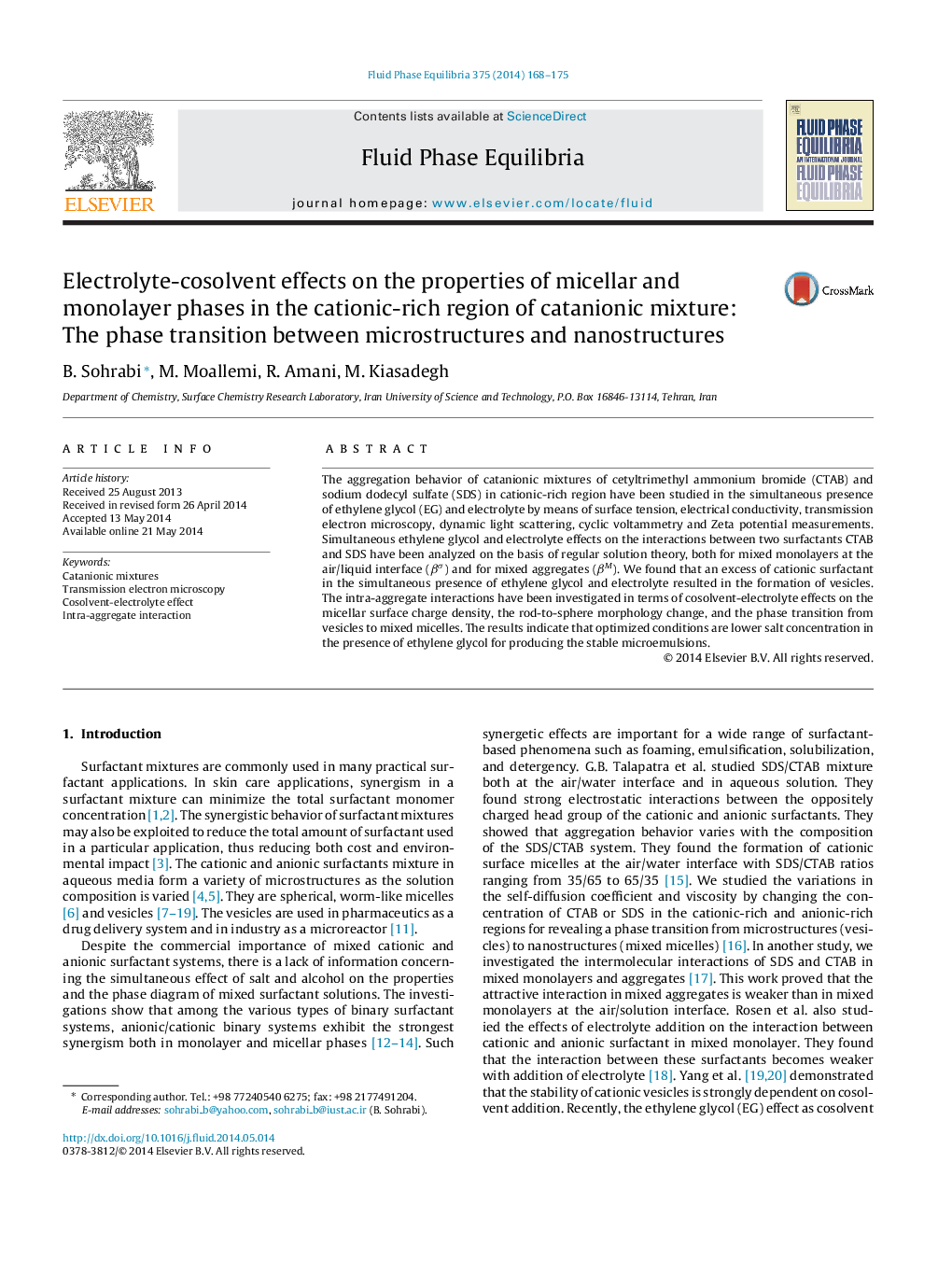| Article ID | Journal | Published Year | Pages | File Type |
|---|---|---|---|---|
| 202349 | Fluid Phase Equilibria | 2014 | 8 Pages |
•The phase transition from nanorod micelles to vesicles with addition of salt and EG was investigated.•Emulsions stability with increasing EG and salt by zeta potential technique was studied.•Our studies show that optimal conditions are lower salt concentration in presence EG for producing stable emulsions.
The aggregation behavior of catanionic mixtures of cetyltrimethyl ammonium bromide (CTAB) and sodium dodecyl sulfate (SDS) in cationic-rich region have been studied in the simultaneous presence of ethylene glycol (EG) and electrolyte by means of surface tension, electrical conductivity, transmission electron microscopy, dynamic light scattering, cyclic voltammetry and Zeta potential measurements. Simultaneous ethylene glycol and electrolyte effects on the interactions between two surfactants CTAB and SDS have been analyzed on the basis of regular solution theory, both for mixed monolayers at the air/liquid interface (βσ) and for mixed aggregates (βM). We found that an excess of cationic surfactant in the simultaneous presence of ethylene glycol and electrolyte resulted in the formation of vesicles. The intra-aggregate interactions have been investigated in terms of cosolvent-electrolyte effects on the micellar surface charge density, the rod-to-sphere morphology change, and the phase transition from vesicles to mixed micelles. The results indicate that optimized conditions are lower salt concentration in the presence of ethylene glycol for producing the stable microemulsions.
